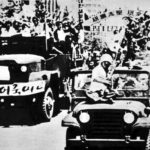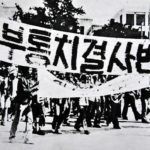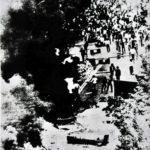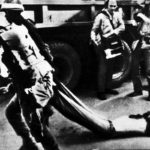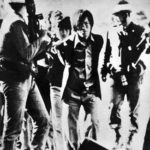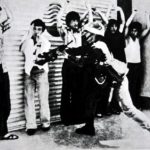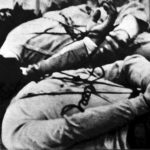From March 1980 the flames of anti-fascist struggle for democracy launched by youth and students spread far and wide across south Korea. In order to maintain the Yushin dictatorship, Chun Doo Hwan declared an “emergency martial law” throughout south Korea on May 17 the same year, which prompted the citizens of Kwangju to rise in armed revolt against the“government”.
This popular uprising started with a demonstration on May 18 by the students of Jeonnam University. The youth and students in the city took part in the demonstration in demand of lifting the “emergency martial law”. When the military authorities committed the heinous airborne troops to enforce a bloody crackdown, the enraged demonstrators resisted violently.
The demonstration immediately swept through the whole city, with all other citizens of Kwangju and the workers and farmers in the suburbs of the city joining in. The number of demonstrators grew to about 300 000 on May 21. The demonstrators attacked the ruling machinery, including the provincial and city administration office buildings, taking control of them. They then raided armouries and seized thousands of weapons. They also took many tanks and armoured vehicles from the “martial law army”. They fought bravely, driving the army out of the city and putting Kwangju under their complete control. The flames of resistance spread to most regions of South Jolla Province and as far as North Jolla Province, with 17 cities and counties, including Mokpho, Raju, Hwasun, Ryonggwang and Tamyang, coming under the control of the demonstrators.
The demonstrators in Kwangju formed autonomous organs, including the “Civil Administration Committee” and the “Democracy Struggle Committee”, as well as armed self-defence units such as the “civilian army”, “special guard force” and “shock brigade”. Large-scale mass rallies to denounce the Yushin fascist dictatorship were held every day.
Embarrassed by the developing situation, the Chun Doo Hwan clique reinforced the “martial law army” to place several rings of troops around Kwangju, encircling the city. They made military threats and enforced an economic blockade while trying to appease the rioters.
As the demonstrators offered stubborn resistance, the Chun Doo Hwan military and fascist clique, supported by the US imperialists, hurled tens of thousands of regular armed forces, many tanks, armoured cars, helicopters and large-calibre guns into another crackdown operation at the dawn of May 27.
The riot troops barbarically suppressed the demonstrators, firing even choking gas shells, which was unprecedented in the history of war. Over 5 000 were slaughtered, 14 000 wounded, and tens of thousands arrested in Kwangju. The demonstrators did not yield despite the lack of food and the cut in the supply of water and electricity, due to the blockade by the enemy.
The uprising joined by as many as one million people of all walks of life in and around Kwangju ended in failure, but it shook the ruling systems of both the United States in south Korea and the south Korean authorities to their very foundations.

